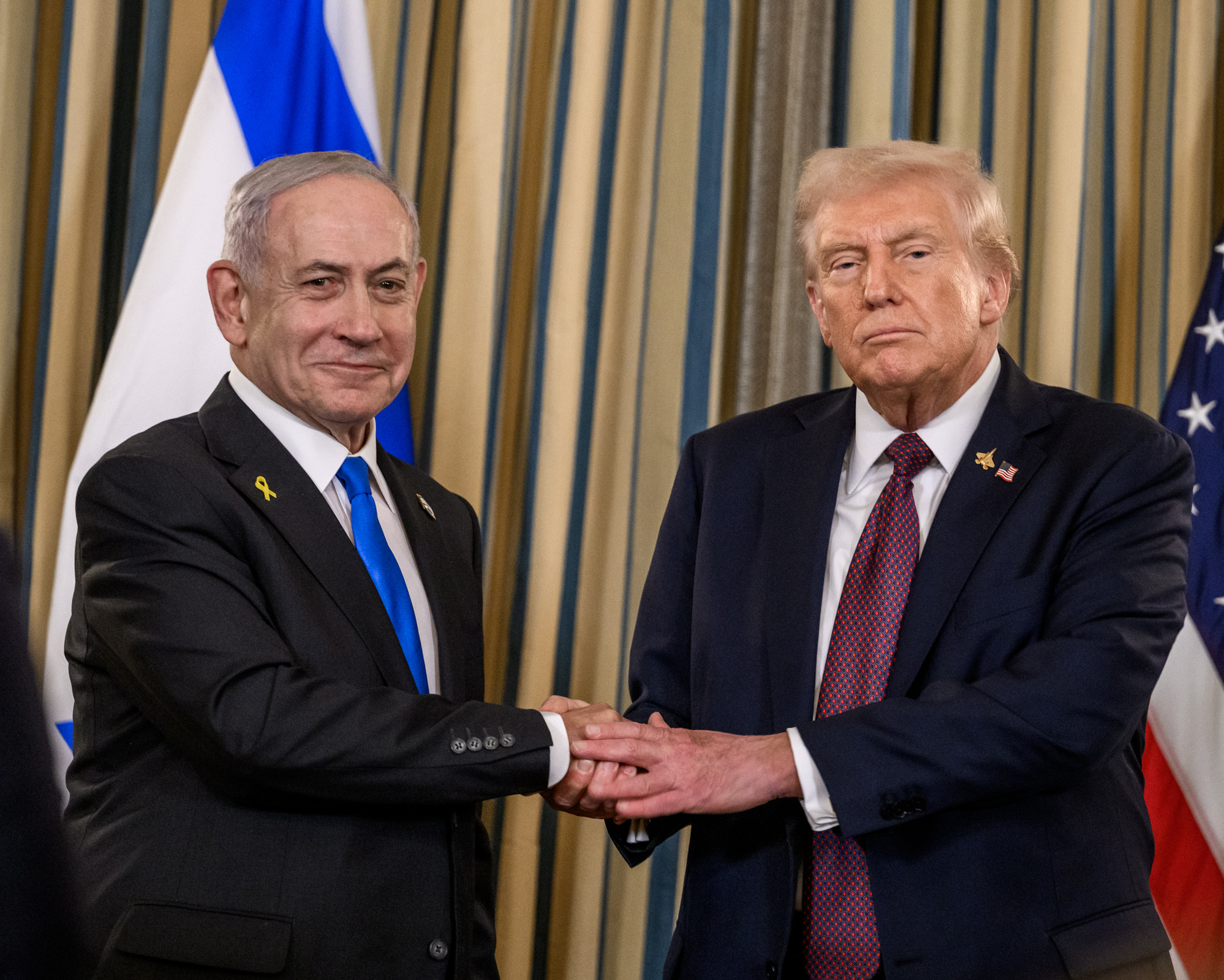The Trump plan states repeatedly that Hamas must be demilitarized, but it never explains who is going to do it.
The UN Security Council (UNSC) resolution passed last week has set off a political storm in Israel. Across social media and throughout the political Right, the loudest criticism has been that the resolution endorses a “pathway to a Palestinian state.”
Israel’s Ambassador to the UN, Danny Danon, immediately rejected the notion, echoing statements by Prime Minister Benjamin Netanyahu and Foreign Minister Gideon Sa’ar. Yes, the resolution includes language about the possibility of Palestinian statehood in the future, yet focusing on that misses the real and urgent danger embedded in this resolution.
The Palestinian state language is not new. It is taken almost verbatim from Clause 19 of President Donald Trump’s 20-point Gaza plan. “After the PA [Palestinian Authority] reform program is faithfully carried out, and Gaza redevelopment has advanced, the conditions may finally be in place for a credible pathway to Palestinian self-determination and statehood.” Unmute
Anyone familiar with the Palestinian Authority knows how unlikely those conditions are. The PA has given no indication that it intends to stop paying terrorists, stop teaching hatred, or stop inciting violence. And in Gaza, meaningful demilitarization remains a fantasy. Therefore, the notion that Israel is on the brink of agreeing to a Palestinian state is unserious.
If genuine reform ever did occur, and Gaza were quiet and de-terrorized, Israel still has no desire to rule its civilian population. Some form of autonomy under firm Israeli security control would hardly be “the end of the world.” Again, though, that is not the issue here.
THE REAL danger of the Security Council resolution lies in the arena where the Trump plan was always weakest: in the disarmament of Hamas.
From the beginning, this has been the glaring hole in the American proposal. The Trump plan states repeatedly that Hamas must be demilitarized, but it never explains who is going to do it. When Jared Kushner was pressed on 60 Minutes, he claimed that this was the job of the proposed international stabilization force (ISF): a multinational security force, to be composed of vetted Palestinians and personnel from Arab states like Jordan and Egypt.
One week later, King Abdullah of Jordan contradicted this in an interview with the BBC, saying bluntly that the ISF was never intended to “enforce” disarmament and that neither Jordan nor any other Arab state would participate in such a mission.
Abdullah was right. In Trump’s 20-point plan, the ISF is introduced only after Hamas is disarmed and Gaza no longer poses a security threat.
This week, on the eve of the UNSC resolution vote, senior Hamas official Osama Hamdan told Al Jazeera media that Hamas “never agreed” to disarm as part of the ceasefire framework. He called the notion “unacceptable,” adding that Hamas would not choose between “being killed or surrendering.”
Hamdan even revealed that Hamas had reached out to members of the Security Council to complain that Washington had inserted the disarmament clause after the fact.
Assigning responsibility for Hamas’s disarmament
Now comes the critical point. For the first time, the new Security Council resolution assigns responsibility for Hamas’s disarmament. Item 7 of the text explicitly states that the international stabilization force “shall… ensure the process of demilitarizing the Gaza Strip,” including destroying terrorist infrastructure and permanently decommissioning weapons.
Simply put, the UNSC resolution assigns the responsibility for disarming Hamas to a force that does not exist, has no contributors, and whose prospective members have already said they will not carry out this task.
This is the trap.
Before this resolution, Israel’s only binding partner in the ceasefire framework was the United States. If Hamas predictably refused to disarm and continued violating the agreement – and if the Americans proved unable to persuade their Qatari intermediaries to pressure Hamas – Israel retained the freedom to act. It could tell Washington that if no one else was prepared to dismantle Hamas’s military capabilities, Israel would have to do it itself.
With Ambassador @michaelgwaltz ahead of the Security Council vote on President Trump’s Gaza plan. pic.twitter.com/rlfDXaqz5X
— Danny Danon 🇮🇱 דני דנון (@dannydanon) November 17, 2025
Now, a Security Council resolution declares that disarmament is the responsibility of the ISF. So what happens when months pass and this force still doesn’t exist? When Hamas refuses to give up a single weapon?
If Israel decides, as it inevitably must, that Hamas’s military capacity must be eliminated, it will now be accused of violating a UN Security Council resolution. The one actor actually willing and able to neutralize Hamas has now been placed under international legal restraint.
This is the real effect of the resolution, and it is far more immediate – and far more dangerous – than any recycled language about a theoretical Palestinian state. The Palestinian state clauses kick the can down the road. The disarmament clause throws a roadblock directly in front of Israel right now.
The world has once again found a way to handcuff the only party capable of preventing Hamas from rearming and threatening Israeli civilians. And this time, the mechanism comes wrapped in the legitimacy of the UN Security Council.
Israel must be clear-eyed about this moment. The real diplomatic battle ahead is not over hypothetical future borders; it is over Israel’s right to defend itself in the present.
The writer is executive director of Israel365action.com and host of the Shoulder to Shoulder podcast.
** This article was originally published on Jpost.org





